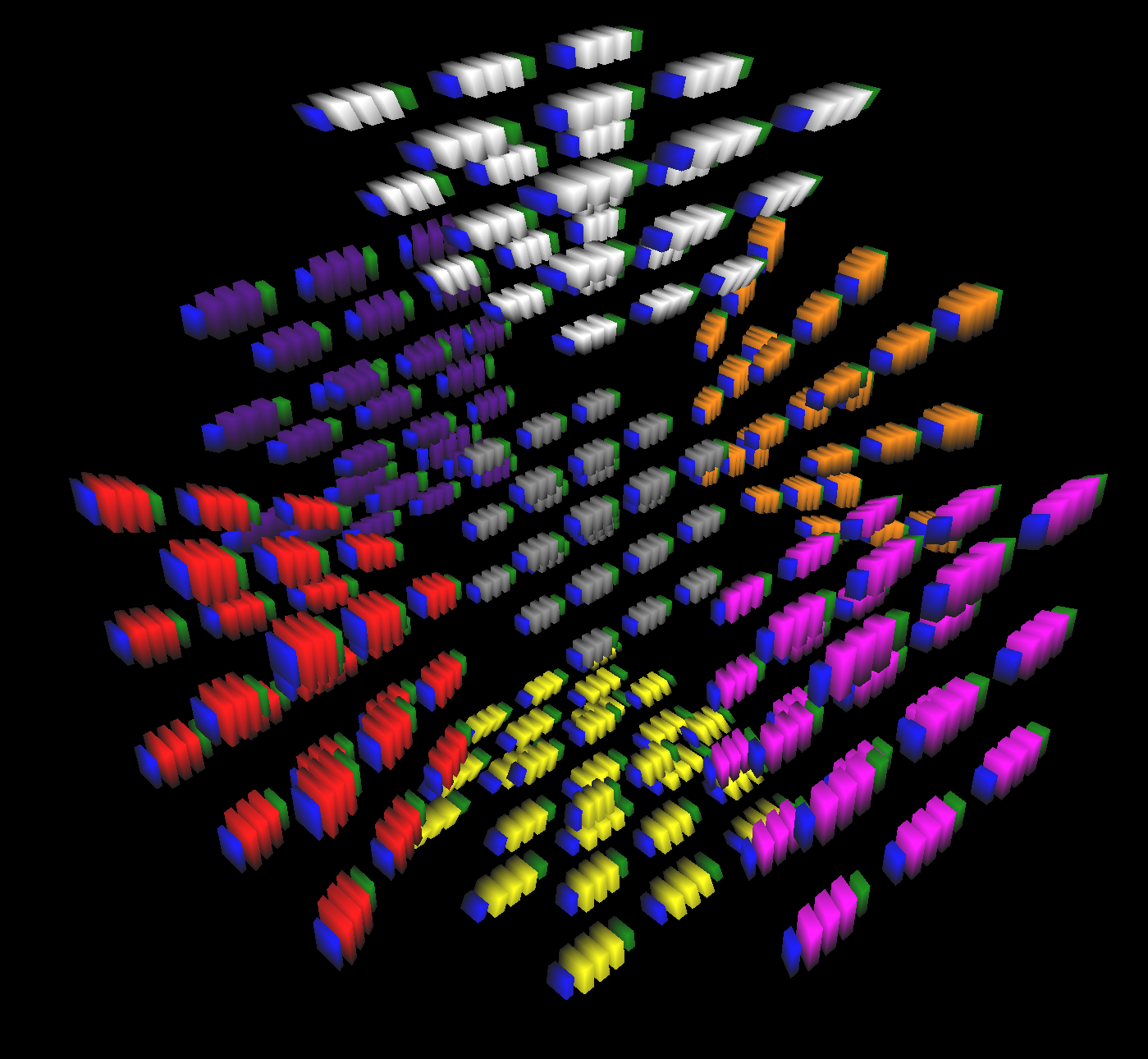3x3x3x3x3¶
The 3x3x3x3x3 or 35 is a 5-dimensional twisty puzzle in the shape of a penteract that has 2 cuts along each of the 5 axes. The 35 is recommended as one’s first introduction to solving 5D puzzles.
Pieces¶
The 35 has 243 hypercubies, of which 232 are movable. It has 10 1c, 40 2c, 80 3c, 80 4c, and 32 5c pieces. 1c pieces are called centers, 2c pieces ridges, 3c pieces peaks, 4c pieces edges, and 5c pieces corners.
Turning¶
Each turn of the 35 is a rotation of one of its hypercube cells. A hypercube can be reoriented in 192 different ways; a lot of ways just to turn a single side! However in most programs, only some of these moves are able to be done with 2 clicks.
Programs¶
There are 3 programs that currently have implementations of the 35: MPU, MC5D, and MC7D. When HSC2 releases, it will be the 35 program of choice with its amazing piece filters and keybind settings. Until then, the 3 programs all come with their different pros and cons.
MPU¶
Magic Puzzle Ultimate objectively has the nicest view of the 35 out of all the programs. The projection is as symmetrical as possible, treating all dimensions equally. It lacks piece filters such that you can only toggle all pieces with a certain number of colours on or off, which makes finding pieces extremely time consuming. To turn the sides you have to click on 3 different 5c pieces.
MC5D¶
This program was designed specifically for 5D puzzles. The pros are that it has a feature to locate a certain piece, as well as an extensive macro system. However, the puzzle is projected in an interesting way that uses the 4D inside-to-outside projection twice. This projection makes many of the stickers overlap. Additionally, the program uses Euler angles for rotation, meaning that sometimes you get stuck at the poles when reorienting the puzzle with the mouse. There are some buttons in the bottom-right of the UI that rotate the puzzle to make up for those issues.
MC7D¶
Magic Cube 7D was made by Andrey Astrelin, and has a different way of projecting higher dimensions. The dimensions higher than 4 are represented with stickers that are smaller than the others. Many of them are also duplicates of each other because they are attached to the other stickers of that piece. While not being the nicest to look at, it does have very useable piece filters and nice 2-click controls, making it a prime candidate to use for one’s first 35 solve.
Permutations¶
The 32 5c pieces of the 3x3x3x3x3 can be placed in any even permutation, and each 5c can be placed in \(\frac{5!}{2}\) orientations, including the last one. The 80 4c pieces can be in any even permutation, and can each have \(4!\) orientations, except the last which can only have \(\frac{4!}{2}\) orientations. The 80 3c pieces can be in any permutation, and can each have \(3!\) orientations, except the last which can only have \(\frac{3!}{2}\) orientations. Finally, the 40 2c pieces can be in any permutation with the same parity as that of the 3c pieces, and each one can have 2 orientations, except the last, whose orientation is determined by the rest of the 2c pieces.1 Thus, the number of permutations of the puzzle is \(\left[\frac{32!}{2} \cdot \left(\frac{5!}{2}\right)^{32}\right] \cdot \left[\frac{80!}{2} \cdot \frac{4!^{80}}{2}\right] \cdot \left[80! \cdot \frac{3!^{80}}{2}\right] \cdot \left[\frac{40!}{2} \cdot 2^{39}\right] \approx 7.02 \cdot 10^{560}.\)
Speedsolving¶
(See the leaderboards for the current records)
A full solve of the 35 had not even been recorded until 2024-03-21 with Rowan Fortier’s first solve, uploading all 15 hours of footage to YouTube. Sadly this did not count as the first speedsolve because it was done over multiple days in different sessions. But a few days later, Luna managed to do it in one sitting, achieving a time of 3h 39m, automatically getting the first world record.


